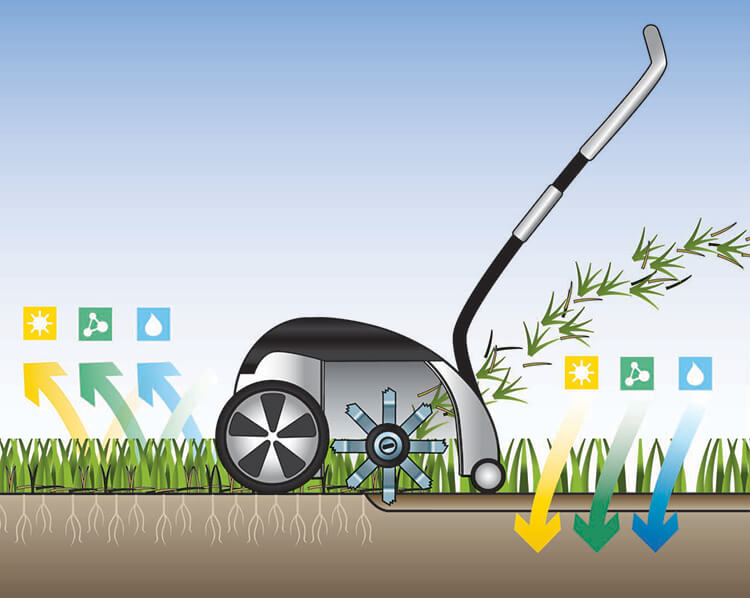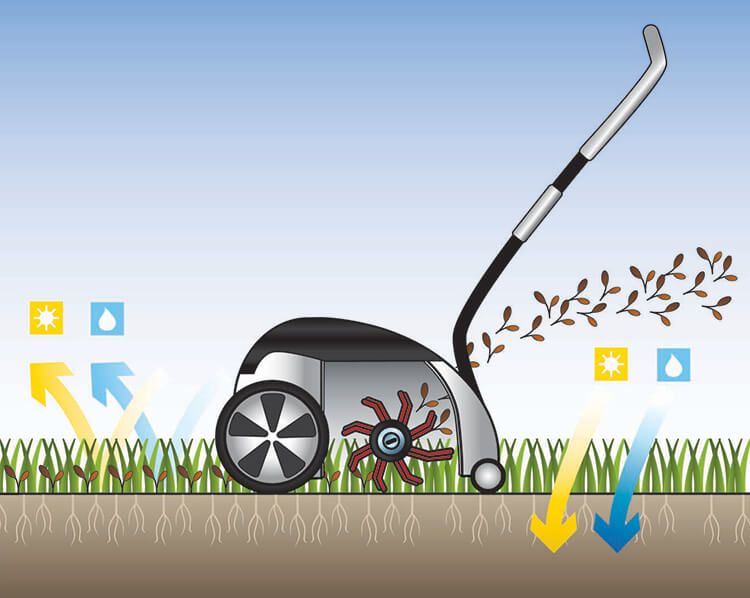
What is Raking & Scarifying?
Learn the difference between raking and scarifying a lawn, when to scarify, when to rake, and what kind of rakers and scarifiers to use on the grass
Scarifying is mainly influenced by grass type; this is going to dictate whether or not your lawn is going to need scarifying or de-thatching. If you’ve got anything other than a mainly rye grass lawn then it will need doing at some time. And if it’s an ornamental or so-called ‘luxury lawn’ full of the fine fescue grasses then you’d better start to love scarifying.
Scarifying should be conducted in autumn where possible with only light scarifying being done in spring.
Raking is influenced by the amount of moss that grows in your lawn. If it’s wet, shady or perhaps on a clay soil then you’ll have your share of moss and you’ll need to do some raking.
So, like it or not you had best be prepared. DON’T bury your head in the sand and hope the problem will go away. It won’t, and year on year it will get worse to the point that you have little or no grass left! The BEST and EASIEST way to tackle problems of thatch or moss is to tackle them early. Let the problem reach CRITICAL and you may not have a lawn to save!
Raking is normally done in spring but can be done in autumn when scarifying if needed.
Scarifying or de-thatching
Lawn scarifiers use steel blades to cut out thatch; hence it is also known as de-thatching. In machines these will rotate whilst manual tools like the rolling lawn scarifier will not.

Lawn thatch by its very nature is removed more easily by this cutting action and the result is a firmer lawn that allows the passage of air, nutrients and water easily into it. Take scarifying a step further by letting the scarifier blades cut into the soil and you will open the soil surface and make an ideal seed bed for introducing new grass seed to your lawn.
The wires on some machines are often on a flail system; in other words, they are not fixed or rigid but swivel around a central axle. This means if they hit anything hard they just flick out of the way. These are ideal for lawns where the surface is rarely super flat so and reduces damage considerably with less stress on the machine.
The blades also ‘prune’ the grass plants because it cuts them downwards rather than cross cutting as in mowing. This pruning, just like pruning a bush or plant causes extra shoots to grow thus thickening the turf.
The ‘chopping’ action is also a good way of controlling some of the coarser or delicate weed grasses such as Yorkshire Fog and Annual Meadow Grass. It can also help control creeping weeds such as speedwell and trefoils (yellow suckling clover).
Raking or de-mossing the lawn
Whereas scarifiers use blade tines, rakes use wire tines just like on a fan or spring-bok lawn rake.

Wires are best for raking because moss is not rooted and comes away quite easily. This means pulling or ripping the moss out rather than cutting it out is best. Wires are also best for giving the lawn a light raking after a drought to clear dead brown grass that has accumulated.
The wires on some machines can be on a flail system just like scarifying blades. Consequently flail wires are excellent for moss removal without too much lawn damage. Smaller raking machines have quite thin wires that are quite flexible thereby reducing damage.
If you intend to rake the lawn by hand this can be quite exhausting because the rake needs a lot of pressure to work which in turn increases resistance and friction. You will find the rolling lawn scarifier is ten times easier to use being excellent for both moss and thatch.